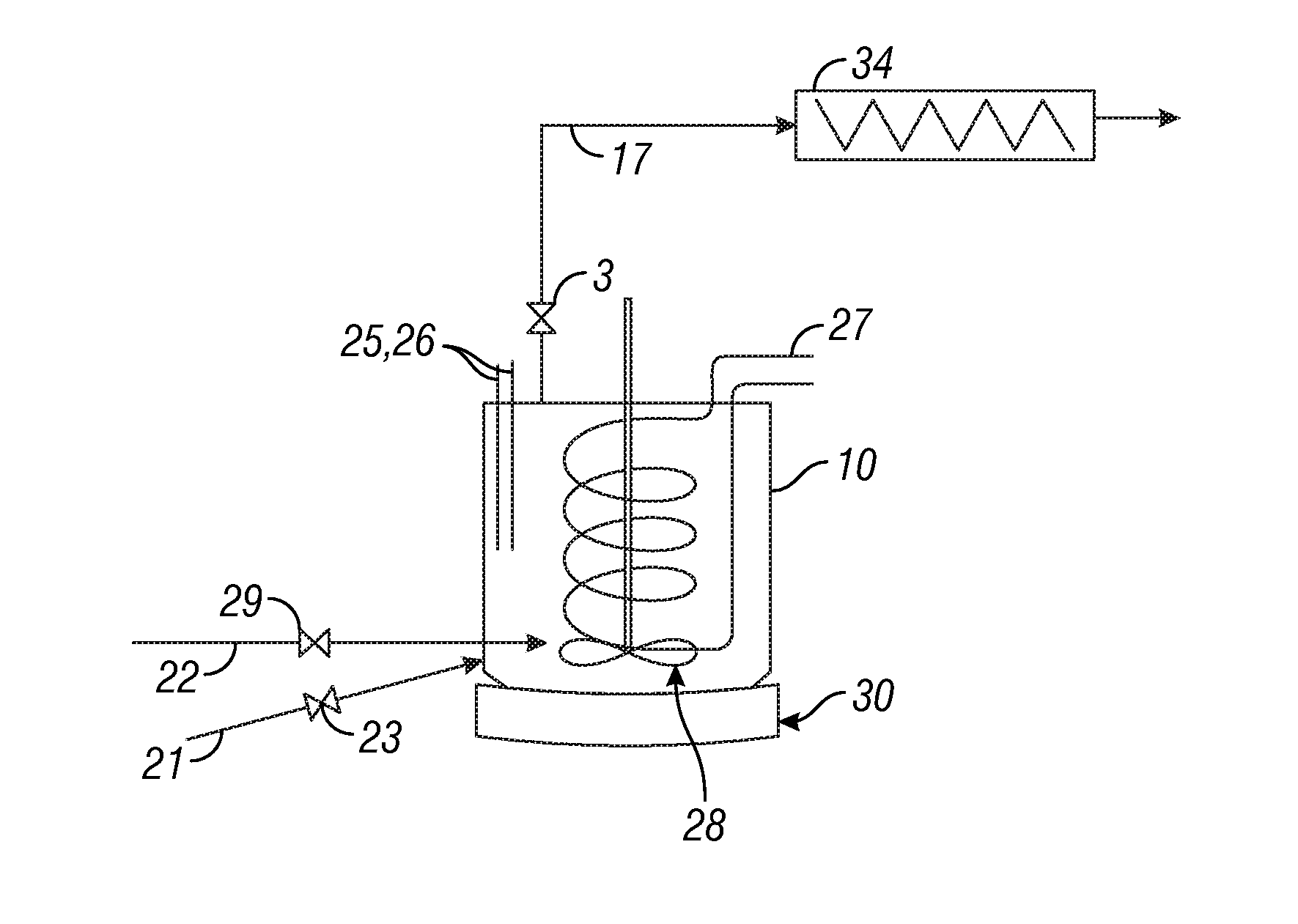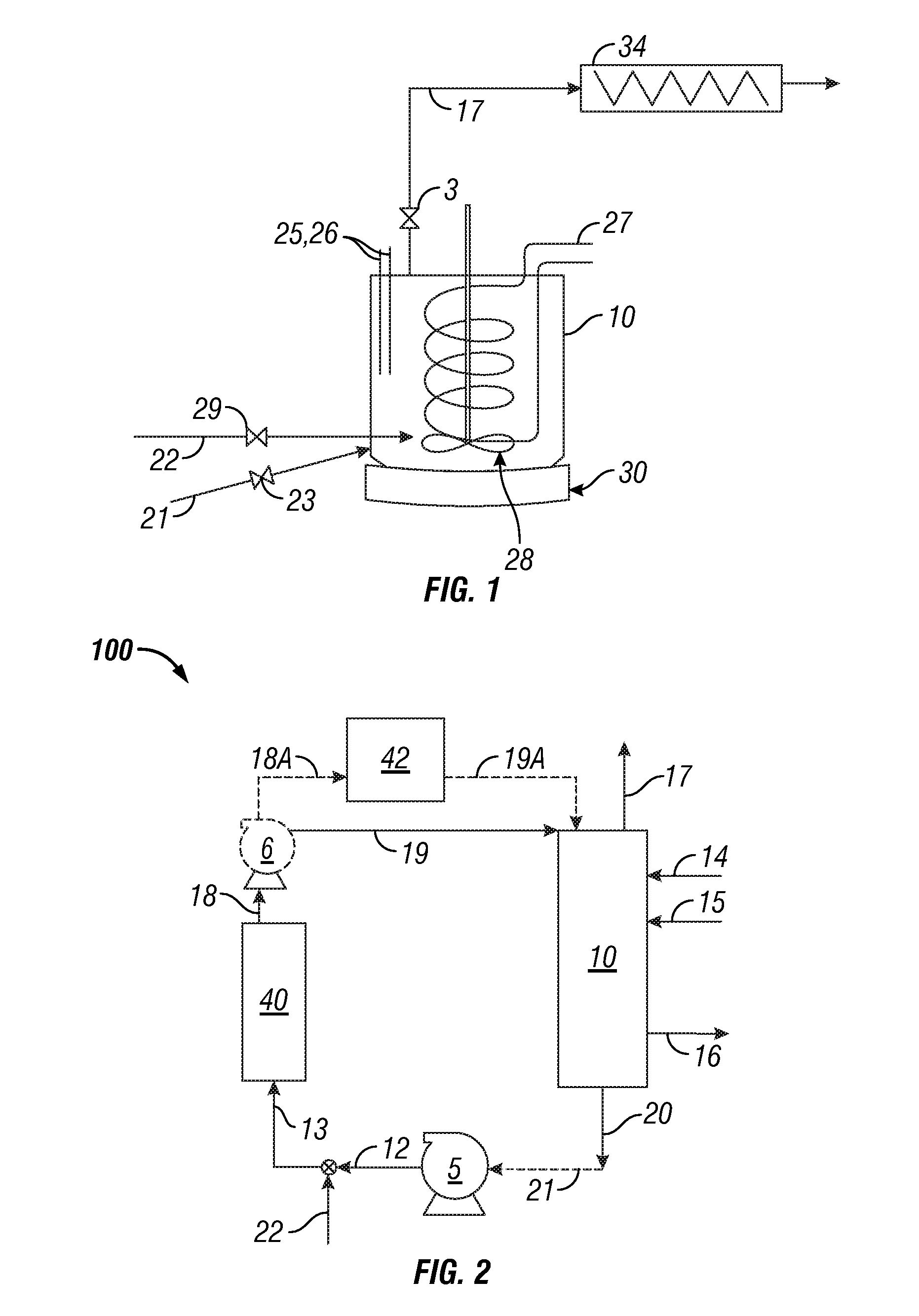Process and catalyst for production of low trans fat-containing triglycerides
a technology of triglyceride and catalyst, which is applied in the direction of physical/chemical process catalyst, other chemical processes, separation processes, etc., to achieve the effect of reducing the level superior product appearance, texture and stability, and reducing the amount of trans fatty acids
- Summary
- Abstract
- Description
- Claims
- Application Information
AI Technical Summary
Benefits of technology
Problems solved by technology
Method used
Image
Examples
example 1
Preparation of Activated Catalyst
[0199]A commercially available hydrogenation catalyst, NYSOFACT®120 was obtained from Engelhard Corporation, Erie, Pa. NYSOFACT® 120 is a nickel silicate catalyst, with approximately 22% by weight Ni content. The catalyst is supplied as solid ‘droplets’ that are coated with a protective hydrogenated vegetable oil that has been hydrogenated to a point where the material is solid at room temperature. This hydrogenated oil coating serves as a protective barrier to reduce reaction of the catalyst with oxygen in the air.
[0200]The NYSOFACT® 120 was activated as follows prior to its use in hydrogenation. The system used to activate the catalyst is shown in FIG. 5. One hundred grams (100 g) of NYSOFACT® 120 was placed in a 500 ml reactor 10 which was then heated using a heating mantle 30. In these examples, the 500 mL reactor was obtained from Autoclave Engineers, Inc. (Erie, Pa.).
[0201]The catalyst was heated from ambient temperature to a temperature suffic...
example 2
Hydrogenation of Vegetable Oil with Activated Hydrogenation Catalyst and Nitrogen Injection
[0204]For this Example, the base oil was a non-hydrogenated soy oil that is refined but not deodorized or bleached, and was obtained from ADM Corp, Decatur, Ill. An analysis of the base soy oil of this example is shown in Table 3.
TABLE 3Fatty acid analysis of Base Soy OilWt %Fatty Acid CompositionC18:04.6C18:123.8C18:252.4C18:36.8Trans FatC18:1 trans0C18:2 trans0.2C18:3 trans0.5Total Trans Fats0.7IV (cg iodine / gm)129.6
[0205]Two grams (2 g) of the non-activated catalyst from Example 1 were placed in a 500 ml autoclave reactor of Example 1 equipped with pressure gauge, mechanical agitator and thermocouple. Two hundred milliliters (200 ml) of the base soy oil was placed in the reactor and the reactor purged.
[0206]The reactor was sealed and pressurized with nitrogen to 20 psi. The reactor was heated to a temperature sufficient to insure all the hardened fat on the catalyst is melted and dispersed,...
example 3
Hydrogenation with Activated Catalyst without Inert Gas Injection
[0210]This example followed the same procedure as in Example 2, except hydrogen (at 100 psi) was used where instead of the nitrogen gas used in Example 2. The results are shown in Table 5.
TABLE 5Composition of Hydrogenated Soy Oil, No Nitrogen% WtFatty Acid CompositionC18:014.5C18:139.3C18:232.8C18:31.9Trans FatC18:1 trans4.4C18:2 trans1.7C18:3 trans0.3Total Trans6.4IV (cg iodine / gm)95.7
[0211]The lower IV value of the hydrogenated oil in this Example, compared to the results shown in Example 2, suggests that there was a significant amount of hydrogenation occurring during the initial heat up and dispersing of the catalyst at the elevated temperature, resulting in a modest but undesirable increase in total trans fatty acid content. The data of Example 3 demonstrates the need to maintain as low a temperature as practical during hydrogenation. Ideally a commercial system would be configured to minimize trans formation wit...
PUM
| Property | Measurement | Unit |
|---|---|---|
| size | aaaaa | aaaaa |
| size | aaaaa | aaaaa |
| speed | aaaaa | aaaaa |
Abstract
Description
Claims
Application Information
 Login to View More
Login to View More - R&D
- Intellectual Property
- Life Sciences
- Materials
- Tech Scout
- Unparalleled Data Quality
- Higher Quality Content
- 60% Fewer Hallucinations
Browse by: Latest US Patents, China's latest patents, Technical Efficacy Thesaurus, Application Domain, Technology Topic, Popular Technical Reports.
© 2025 PatSnap. All rights reserved.Legal|Privacy policy|Modern Slavery Act Transparency Statement|Sitemap|About US| Contact US: help@patsnap.com



